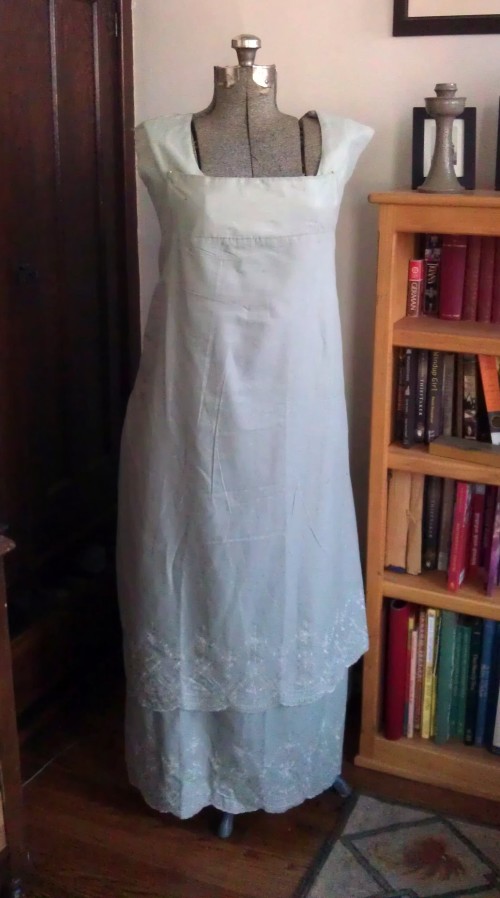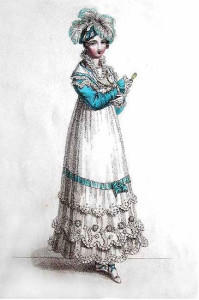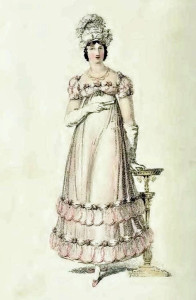I find hand-sewing to be soothing, because it allows me to make something tangible. It also lets my story brain chew on problems in privacy while the rest of me is preoccupied.
This is a bib-front dress in progress, which I will probably wear to my launch party and Without a Summer events. My plan is to ornament the neckline with embroidery to complement the hem.
Knowing that… what do you think I should do with the sleeves? Fashion from 1815-1817 is fair game.

Here are two totally different dresses, both from 1817, that I was thinking of when I decided to do the two falls on the dress.



A nice translucent sleeve perhaps? Or is that too 1830s?
I am a fan of the long bound sleeves of the period, although the one example I saw was 1818. It’s dinner prep time with toddler though so you can see if there are more. I’m also fond of the straight sleeves that are detachable from the short puffed sleeve. That should be document-able to your time frame.
Perhaps echo the skirt some with a ruffly sleeve?
http://joechip.net/liana/2010/05/08/black-and-white-regency-gown-for-coloring/
http://hibiscus-sinensis.com/regency/weddingdress.htm
https://janeaustensworld.wordpress.com/tag/childs-regency-dress/
Plain at the top, but full above the sleeveband, with lace.
Those are lovely. Wow.
I’m leaning to doing a ballgown sleeve with double-ruffle, and then a long sleeve, with trim repeated, that I can detach in the summer.
The detachable-sleeve technique is so clever. I don’t know why it wasn’t more used in history. (I suppose it was used some waaay back when sleeves were attached by lacings.)
If it was Renaissance instead of Enlightenment, perhaps you could leave it be and become a sleeveless knave… but I think comfort is probably the best deciding factor for this one, as you’re going to actually have to move in it. (I won’t claim that the USAF ceremonial dress uniform of the 1980s and 1990s matches all of the problems of women’s fashion of any era, but when the uniform makes it hard to even salute correctly, something is severely wrong. And it was due to the sleeves.)